
clearml-serving
ClearML - Model-Serving Orchestration and Repository Solution
Stars: 132
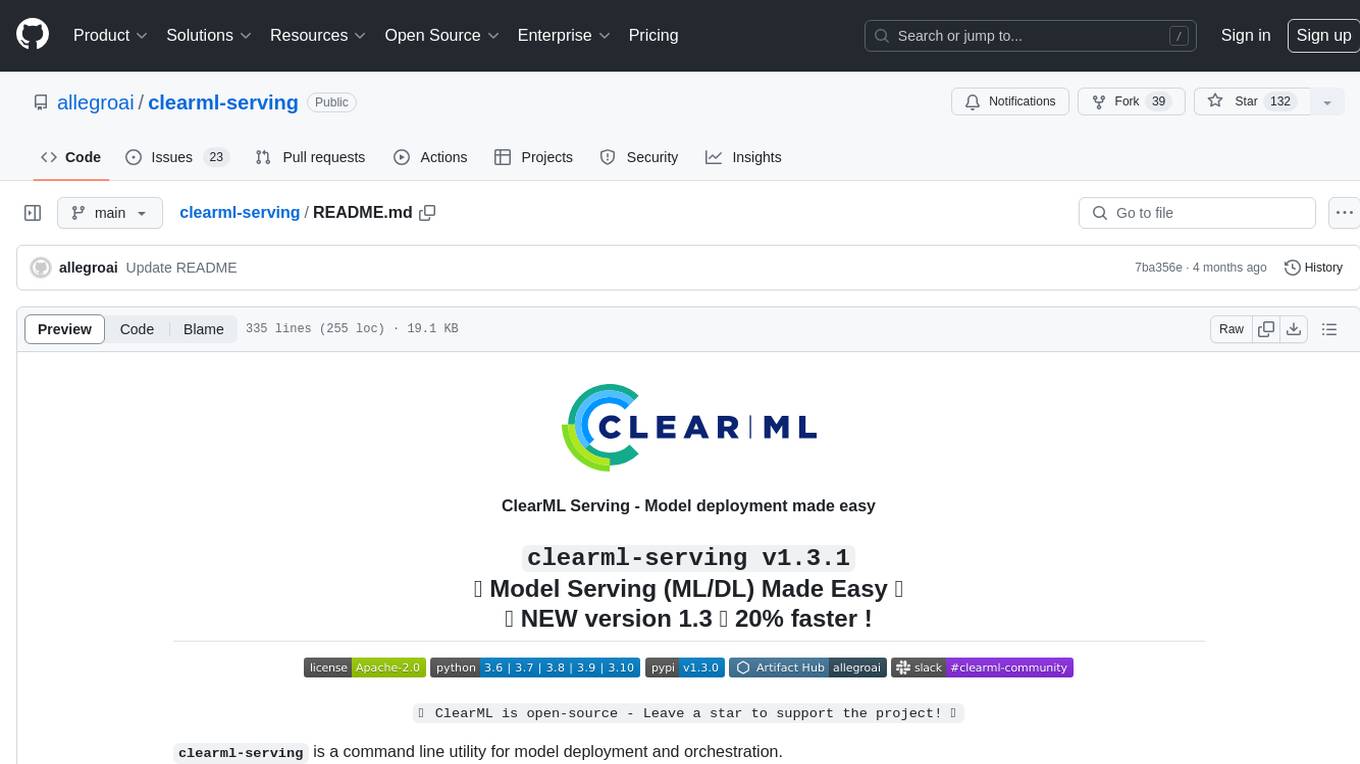
ClearML Serving is a command line utility for model deployment and orchestration, enabling model deployment including serving and preprocessing code to a Kubernetes cluster or custom container based solution. It supports machine learning models like Scikit Learn, XGBoost, LightGBM, and deep learning models like TensorFlow, PyTorch, ONNX. It provides a customizable RestAPI for serving, online model deployment, scalable solutions, multi-model per container, automatic deployment, canary A/B deployment, model monitoring, usage metric reporting, metric dashboard, and model performance metrics. ClearML Serving is modular, scalable, flexible, customizable, and open source.
README:
ClearML Serving - Model deployment made easy
🌟 ClearML is open-source - Leave a star to support the project! 🌟
clearml-serving is a command line utility for model deployment and orchestration.
It enables model deployment including serving and preprocessing code to a Kubernetes cluster or custom container based solution.
🔥 NEW 🎊 Take it for a spin with a simple docker-compose command 🪄 ✨
Features:
- Easy to deploy & configure
- Support Machine Learning Models (Scikit Learn, XGBoost, LightGBM)
- Support Deep Learning Models (Tensorflow, PyTorch, ONNX)
- Customizable RestAPI for serving (i.e. allow per model pre/post-processing for easy integration)
- Flexible
- On-line model deployment
- On-line endpoint model/version deployment (i.e. no need to take the service down)
- Per model standalone preprocessing and postprocessing python code
- Scalable
- Multi model per container
- Multi models per serving service
- Multi-service support (fully seperated multiple serving service running independently)
- Multi cluster support
- Out-of-the-box node auto-scaling based on load/usage
- Efficient
- Multi-container resource utilization
- Support for CPU & GPU nodes
- Auto-batching for DL models
- Automatic deployment
- Automatic model upgrades w/ canary support
- Programmable API for model deployment
- Canary A/B deployment
- Online Canary updates
- Model Monitoring
- Usage Metric reporting
- Metric Dashboard
- Model performance metric
- Model performance Dashboard
Modular , Scalable , Flexible , Customizable , Open Source
- ClearML-Server : Model repository, Service Health, Control plane
- Kubernetes / Single-instance Machine : Deploying containers
- CLI : Configuration & model deployment interface
- Setup your ClearML Server or use the Free tier Hosting
- Setup local access (if you haven't already), see instructions here
- Install clearml-serving CLI:
pip3 install clearml-serving- Create the Serving Service Controller
clearml-serving create --name "serving example"- The new serving service UID should be printed
New Serving Service created: id=aa11bb22aa11bb22
- Write down the Serving Service UID
- Clone clearml-serving repository
git clone https://github.com/allegroai/clearml-serving.git- Edit the environment variables file (
docker/example.env) with your clearml-server credentials and Serving Service UID. For example, you should have something like
cat docker/example.env CLEARML_WEB_HOST="https://app.clear.ml"
CLEARML_API_HOST="https://api.clear.ml"
CLEARML_FILES_HOST="https://files.clear.ml"
CLEARML_API_ACCESS_KEY="<access_key_here>"
CLEARML_API_SECRET_KEY="<secret_key_here>"
CLEARML_SERVING_TASK_ID="<serving_service_id_here>"- Spin the clearml-serving containers with docker-compose (or if running on Kubernetes use the helm chart)
cd docker && docker-compose --env-file example.env -f docker-compose.yml up If you need Triton support (keras/pytorch/onnx etc.), use the triton docker-compose file
cd docker && docker-compose --env-file example.env -f docker-compose-triton.yml up 💪 If running on a GPU instance w/ Triton support (keras/pytorch/onnx etc.), use the triton gpu docker-compose file
cd docker && docker-compose --env-file example.env -f docker-compose-triton-gpu.yml up Notice: Any model that registers with "Triton" engine, will run the pre/post processing code on the Inference service container, and the model inference itself will be executed on the Triton Engine container.
To add access credentials and allow the inference containers to download models from your S3/GS/Azure object-storage,
add the respective environment variables to your env files (example.env)
See further details on configuring the storage access here
AWS_ACCESS_KEY_ID
AWS_SECRET_ACCESS_KEY
AWS_DEFAULT_REGION
GOOGLE_APPLICATION_CREDENTIALS
AZURE_STORAGE_ACCOUNT
AZURE_STORAGE_KEYCLI - Secure configuration interface for on-line model upgrade/deployment on running Serving Services
Serving Service Task - Control plane object storing configuration on all the endpoints. Support multiple separated instance, deployed on multiple clusters.
Inference Services - Inference containers, performing model serving pre/post processing. Also support CPU model inferencing.
Serving Engine Services - Inference engine containers (e.g. Nvidia Triton, TorchServe etc.) used by the Inference Services for heavier model inference.
Statistics Service - Single instance per Serving Service collecting and broadcasting model serving & performance statistics
Time-series DB - Statistics collection service used by the Statistics Service, e.g. Prometheus
Dashboards - Customizable dashboard-ing solution on top of the collected statistics, e.g. Grafana
- Train toy scikit-learn model
- create new python virtual environment
pip3 install -r examples/sklearn/requirements.txtpython3 examples/sklearn/train_model.py- Model was automatically registered and uploaded into the model repository. For Manual model registration see here
- Register the new Model on the Serving Service
clearml-serving --id <service_id> model add --engine sklearn --endpoint "test_model_sklearn" --preprocess "examples/sklearn/preprocess.py" --name "train sklearn model" --project "serving examples"- Notice the preprocessing python code is packaged and uploaded to the "Serving Service", to be used by any inference container, and downloaded in realtime when updated
- Spin the Inference Container
- Customize container Dockerfile if needed
- Build container
docker build --tag clearml-serving-inference:latest -f clearml_serving/serving/Dockerfile . - Spin the inference container:
docker run -v ~/clearml.conf:/root/clearml.conf -p 8080:8080 -e CLEARML_SERVING_TASK_ID=<service_id> -e CLEARML_SERVING_POLL_FREQ=5 clearml-serving-inference:latest
- Test new model inference endpoint
curl -X POST "http://127.0.0.1:8080/serve/test_model_sklearn" -H "accept: application/json" -H "Content-Type: application/json" -d '{"x0": 1, "x1": 2}'
Notice, now that we have an inference container running, we can add new model inference endpoints directly with the CLI. The inference container will automatically sync once every 5 minutes.
Notice On the first few requests the inference container needs to download the model file and preprocessing python code, this means the request might take a little longer, once everything is cached, it will return almost immediately.
Notes:
Review the model repository in the ClearML web UI, under the "serving examples" Project on your ClearML account/server (free hosted or self-deployed).
Inference services status, console outputs and machine metrics are available in the ClearML UI in the Serving Service project (default: "DevOps" project)
To learn more on training models and the ClearML model repository, see the ClearML documentation
Uploading an existing model file into the model repository can be done via the clearml RestAPI, the python interface, or with the clearml-serving CLI.
To learn more on training models and the ClearML model repository, see the ClearML documentation
- local model file on our laptop: 'examples/sklearn/sklearn-model.pkl'
- Upload the model file to the
clearml-serverfile storage and register itclearml-serving --id <service_id> model upload --name "manual sklearn model" --project "serving examples" --framework "scikit-learn" --path examples/sklearn/sklearn-model.pkl - We now have a new Model in the "serving examples" project, by the name of "manual sklearn model". The CLI output prints the UID of the newly created model, we will use it to register a new endpoint
- In the
clearmlweb UI we can see the new model listed under theModelstab in the associated project. we can also download the model file itself directly from the web UI - Register a new endpoint with the new model
clearml-serving --id <service_id> model add --engine sklearn --endpoint "test_model_sklearn" --preprocess "examples/sklearn/preprocess.py" --model-id <newly_created_model_id_here>
Notice we can also provide a differnt storage destination for the model, such as S3/GS/Azure, by passing
--destination="s3://bucket/folder", gs://bucket/folder, azure://bucket/folder. Yhere is no need to provide a unique path tp the destination argument, the location of the model will be a unique path based on the serving service ID and the model name
The clearml Serving Service support automatic model deployment and upgrades, directly connected with the model repository and API. When the model auto-deploy is configured, a new model versions will be automatically deployed when you "publish" or "tag" a new model in the clearml model repository. This automation interface allows for simpler CI/CD model deployment process, as a single API automatically deploy (or remove) a model from the Serving Service.
- Configure the model auto-update on the Serving Service
clearml-serving --id <service_id> model auto-update --engine sklearn --endpoint "test_model_sklearn_auto" --preprocess "preprocess.py" --name "train sklearn model" --project "serving examples" --max-versions 2
- Deploy the Inference container (if not already deployed)
- Publish a new model the model repository
- Go to the "serving examples" project in the ClearML web UI, click on the Models Tab, search for "train sklearn model" right click and select "Publish"
- Use the RestAPI details
- Use Python interface:
from clearml import Model
Model(model_id="unique_model_id_here").publish()- The new model is available on a new endpoint version (1), test with:
curl -X POST "http://127.0.0.1:8080/serve/test_model_sklearn_auto/1" -H "accept: application/json" -H "Content-Type: application/json" -d '{"x0": 1, "x1": 2}'
Canary endpoint deployment add a new endpoint where the actual request is sent to a preconfigured set of endpoints with pre-provided distribution. For example, let's create a new endpoint "test_model_sklearn_canary", we can provide a list of endpoints and probabilities (weights).
clearml-serving --id <service_id> model canary --endpoint "test_model_sklearn_canary" --weights 0.1 0.9 --input-endpoints test_model_sklearn/2 test_model_sklearn/1This means that any request coming to /test_model_sklearn_canary/ will be routed with probability of 90% to
/test_model_sklearn/1/ and with probability of 10% to /test_model_sklearn/2/.
Note:
As with any other Serving Service configuration, we can configure the Canary endpoint while the Inference containers are already running and deployed, they will get updated in their next update cycle (default: once every 5 minutes)
We can also prepare a "fixed" canary endpoint, always splitting the load between the last two deployed models:
clearml-serving --id <service_id> model canary --endpoint "test_model_sklearn_canary" --weights 0.1 0.9 --input-endpoints-prefix test_model_sklearn/This means that is we have two model inference endpoints: /test_model_sklearn/1/ and /test_model_sklearn/2/. The 10% probability (weight 0.1) will match the last (order by version number) endpoint, i.e. /test_model_sklearn/2/ and the 90% will match /test_model_sklearn/2/.
When we add a new model endpoint version, e.g. /test_model_sklearn/3/, the canary distribution will automatically match the 90% probability to /test_model_sklearn/2/ and the 10% to the new endpoint /test_model_sklearn/3/.
Example:
- Add two endpoints:
clearml-serving --id <service_id> model add --engine sklearn --endpoint "test_model_sklearn" --preprocess "examples/sklearn/preprocess.py" --name "train sklearn model" --version 1 --project "serving examples"clearml-serving --id <service_id> model add --engine sklearn --endpoint "test_model_sklearn" --preprocess "examples/sklearn/preprocess.py" --name "train sklearn model" --version 2 --project "serving examples"
- Add Canary endpoint:
clearml-serving --id <service_id> model canary --endpoint "test_model_sklearn_canary" --weights 0.1 0.9 --input-endpoints test_model_sklearn/2 test_model_sklearn/1
- Test Canary endpoint:
curl -X POST "http://127.0.0.1:8080/serve/test_model" -H "accept: application/json" -H "Content-Type: application/json" -d '{"x0": 1, "x1": 2}'
ClearML serving instances send serving statistics (count/latency) automatically to Prometheus and Grafana can be used to visualize and create live dashboards.
The default docker-compose installation is preconfigured with Prometheus and Grafana, do notice that by default data/ate of both containers is not persistent. To add persistence we do recommend adding a volume mount.
You can also add many custom metrics on the input/predictions of your models.
Once a model endpoint is registered, adding custom metric can be done using the CLI.
For example, assume we have our mock scikit-learn model deployed on endpoint test_model_sklearn,
we can log the requests inputs and outputs (see examples/sklearn/preprocess.py example):
clearml-serving --id <serving_service_id_here> metrics add --endpoint test_model_sklearn --variable-scalar
x0=0,0.1,0.5,1,10 x1=0,0.1,0.5,1,10 y=0,0.1,0.5,0.75,1This will create a distribution histogram (buckets specified via a list of less-equal values after = sign),
that we will be able to visualize on Grafana.
Notice we can also log time-series values with --variable-value x2 or discrete results (e.g. classifications strings) with --variable-enum animal=cat,dog,sheep.
Additional custom variables can be in the preprocess and postprocess with a call to collect_custom_statistics_fn({'new_var': 1.337}) see clearml_serving/preprocess/preprocess_template.py
With the new metrics logged we can create a visualization dashboard over the latency of the calls, and the output distribution.
Grafana model performance example:
- browse to http://localhost:3000
- login with: admin/admin
- create a new dashboard
- select Prometheus as data source
- Add a query:
100 * increase(test_model_sklearn:_latency_bucket[1m]) / increase(test_model_sklearn:_latency_sum[1m]) - Change type to heatmap, and select on the right hand-side under "Data Format" select "Time series buckets"
- You now have the latency distribution, over time.
- Repeat the same process for x0, the query would be
100 * increase(test_model_sklearn:x0_bucket[1m]) / increase(test_model_sklearn:x0_sum[1m])
Notice: If not specified all serving requests will be logged, to change the default configure "CLEARML_DEFAULT_METRIC_LOG_FREQ", for example CLEARML_DEFAULT_METRIC_LOG_FREQ=0.2 means only 20% of all requests will be logged. You can also specify per endpoint log frequency with the
clearml-servingCLI. Check the CLI documentation withclearml-serving metrics --help
- Scikit-Learn example - random data
- Scikit-Learn Model Ensemble example - random data
- XGBoost example - iris dataset
- LightGBM example - iris dataset
- PyTorch example - mnist dataset
- TensorFlow/Keras example - mnist dataset
- Multi-Model Pipeline example - multiple models
- Multi-Model ASync Pipeline example - multiple models
- Custom Model example - custom data
- [x] FastAPI integration for inference service
- [x] multi-process Gunicorn for inference service
- [x] Dynamic preprocess python code loading (no need for container/process restart)
- [x] Model files download/caching (http/s3/gs/azure)
- [x] Scikit-learn. XGBoost, LightGBM integration
- [x] Custom inference, including dynamic code loading
- [x] Manual model upload/registration to model repository (http/s3/gs/azure)
- [x] Canary load balancing
- [x] Auto model endpoint deployment based on model repository state
- [x] Machine/Node health metrics
- [x] Dynamic online configuration
- [x] CLI configuration tool
- [x] Nvidia Triton integration
- [x] GZip request compression
- [x] TorchServe engine integration
- [x] Prebuilt Docker containers (dockerhub)
- [x] Docker-compose deployment (CPU/GPU)
- [x] Scikit-Learn example
- [x] XGBoost example
- [x] LightGBM example
- [x] PyTorch example
- [x] TensorFlow/Keras example
- [x] Model ensemble example
- [x] Model pipeline example
- [x] Statistics Service
- [x] Kafka install instructions
- [x] Prometheus install instructions
- [x] Grafana install instructions
- [x] Kubernetes Helm Chart
- [ ] Intel optimized container (python, numpy, daal, scikit-learn)
PRs are always welcomed ❤️ See more details in the ClearML Guidelines for Contributing.
For Tasks:
Click tags to check more tools for each tasksFor Jobs:
Alternative AI tools for clearml-serving
Similar Open Source Tools

clearml-serving
ClearML Serving is a command line utility for model deployment and orchestration, enabling model deployment including serving and preprocessing code to a Kubernetes cluster or custom container based solution. It supports machine learning models like Scikit Learn, XGBoost, LightGBM, and deep learning models like TensorFlow, PyTorch, ONNX. It provides a customizable RestAPI for serving, online model deployment, scalable solutions, multi-model per container, automatic deployment, canary A/B deployment, model monitoring, usage metric reporting, metric dashboard, and model performance metrics. ClearML Serving is modular, scalable, flexible, customizable, and open source.
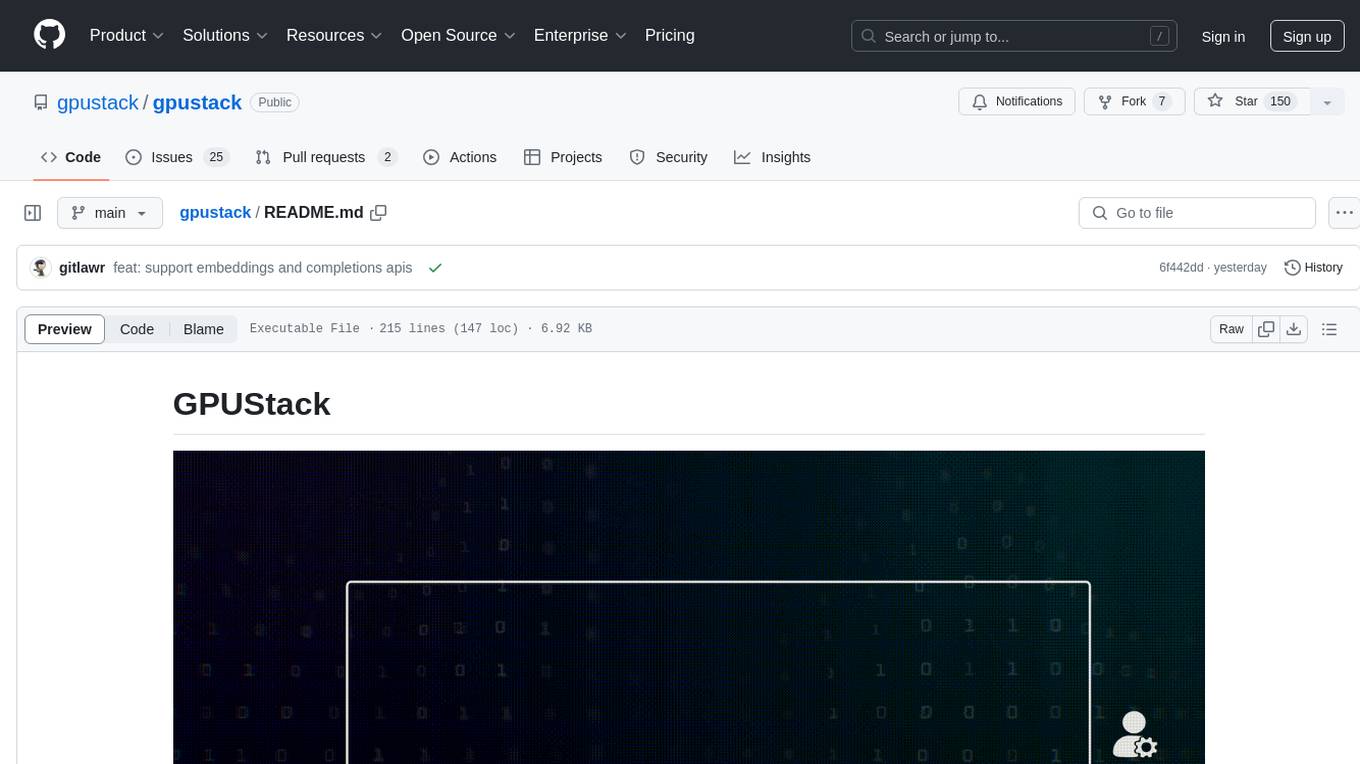
gpustack
GPUStack is an open-source GPU cluster manager designed for running large language models (LLMs). It supports a wide variety of hardware, scales with GPU inventory, offers lightweight Python package with minimal dependencies, provides OpenAI-compatible APIs, simplifies user and API key management, enables GPU metrics monitoring, and facilitates token usage and rate metrics tracking. The tool is suitable for managing GPU clusters efficiently and effectively.
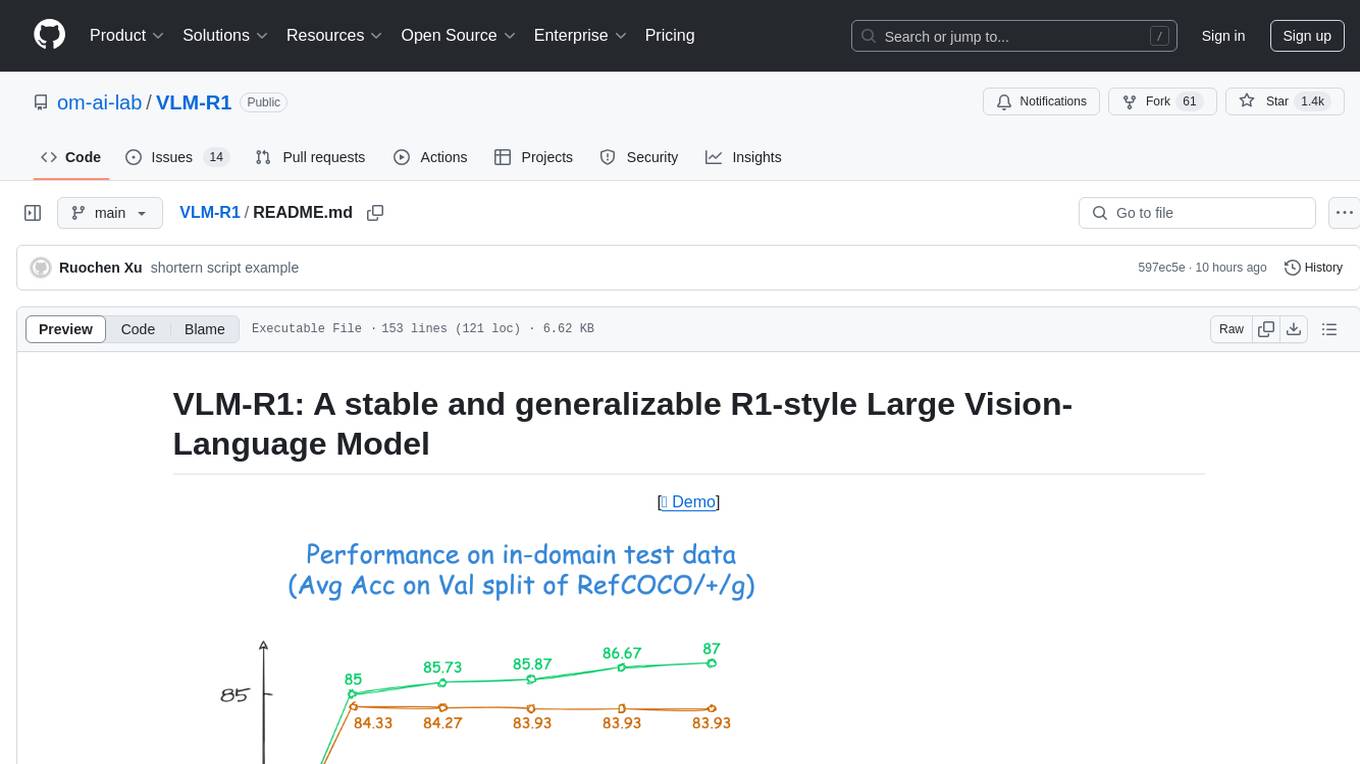
VLM-R1
VLM-R1 is a stable and generalizable R1-style Large Vision-Language Model proposed for Referring Expression Comprehension (REC) task. It compares R1 and SFT approaches, showing R1 model's steady improvement on out-of-domain test data. The project includes setup instructions, training steps for GRPO and SFT models, support for user data loading, and evaluation process. Acknowledgements to various open-source projects and resources are mentioned. The project aims to provide a reliable and versatile solution for vision-language tasks.
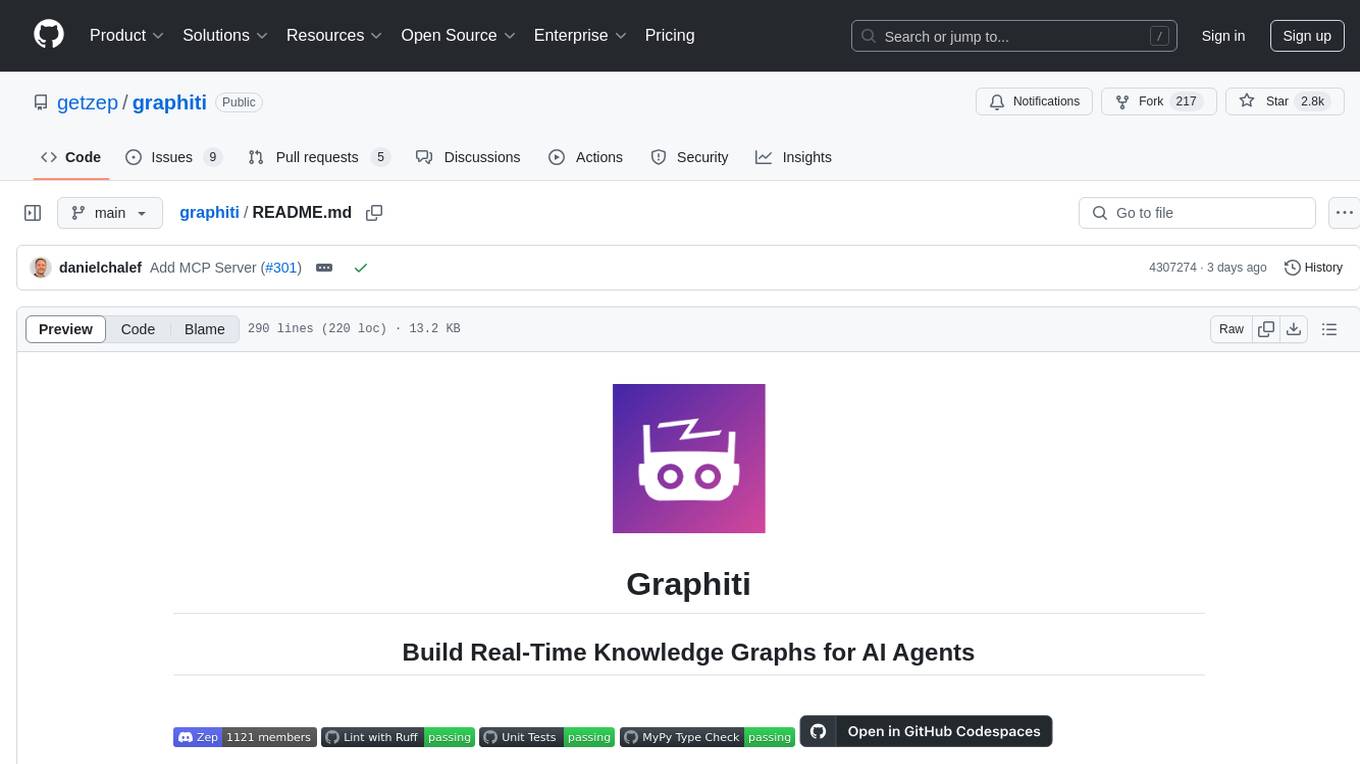
graphiti
Graphiti is a framework for building and querying temporally-aware knowledge graphs, tailored for AI agents in dynamic environments. It continuously integrates user interactions, structured and unstructured data, and external information into a coherent, queryable graph. The framework supports incremental data updates, efficient retrieval, and precise historical queries without complete graph recomputation, making it suitable for developing interactive, context-aware AI applications.
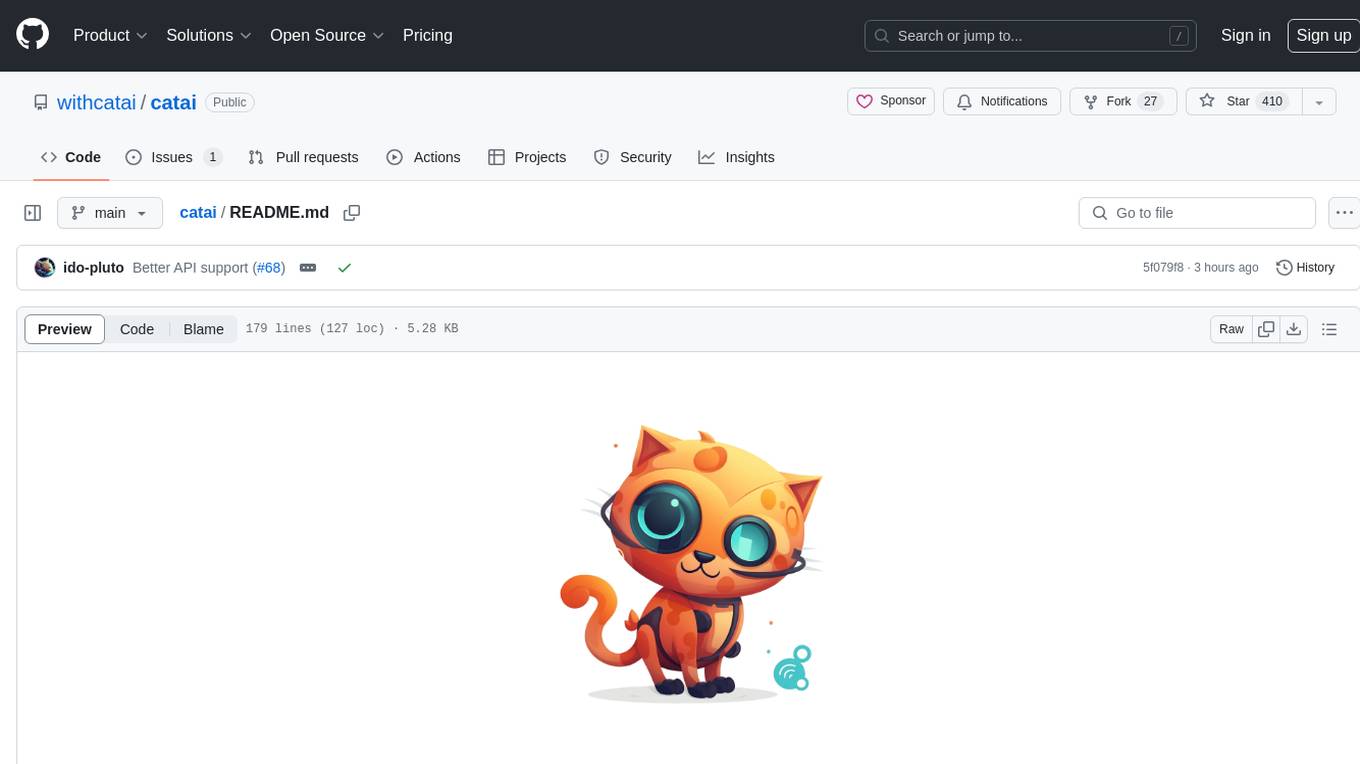
catai
CatAI is a tool that allows users to run GGUF models on their computer with a chat UI. It serves as a local AI assistant inspired by Node-Llama-Cpp and Llama.cpp. The tool provides features such as auto-detecting programming language, showing original messages by clicking on user icons, real-time text streaming, and fast model downloads. Users can interact with the tool through a CLI that supports commands for installing, listing, setting, serving, updating, and removing models. CatAI is cross-platform and supports Windows, Linux, and Mac. It utilizes node-llama-cpp and offers a simple API for asking model questions. Additionally, developers can integrate the tool with node-llama-cpp@beta for model management and chatting. The configuration can be edited via the web UI, and contributions to the project are welcome. The tool is licensed under Llama.cpp's license.
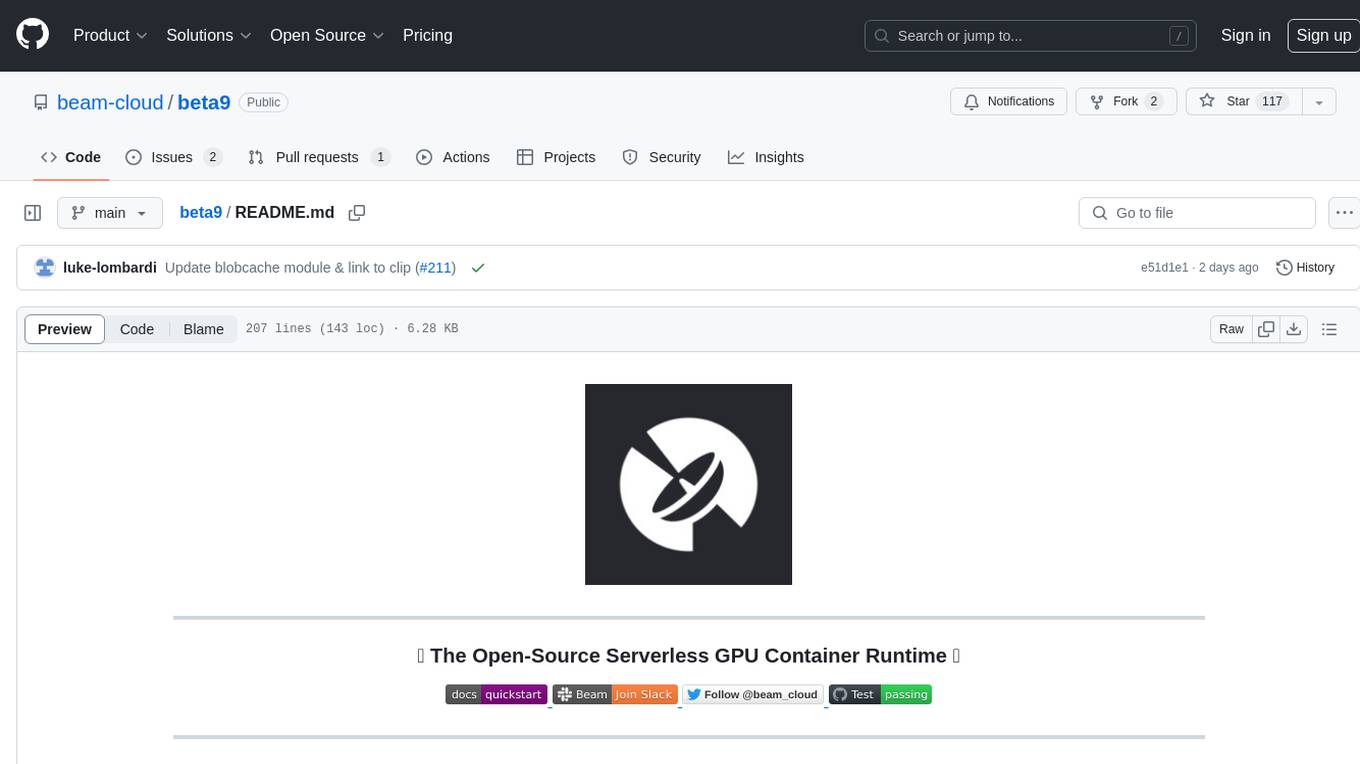
beta9
Beta9 is an open-source platform for running scalable serverless GPU workloads across cloud providers. It allows users to scale out workloads to thousands of GPU or CPU containers, achieve ultrafast cold-start for custom ML models, automatically scale to zero to pay for only what is used, utilize flexible distributed storage, distribute workloads across multiple cloud providers, and easily deploy task queues and functions using simple Python abstractions. The platform is designed for launching remote serverless containers quickly, featuring a custom, lazy loading image format backed by S3/FUSE, a fast redis-based container scheduling engine, content-addressed storage for caching images and files, and a custom runc container runtime.
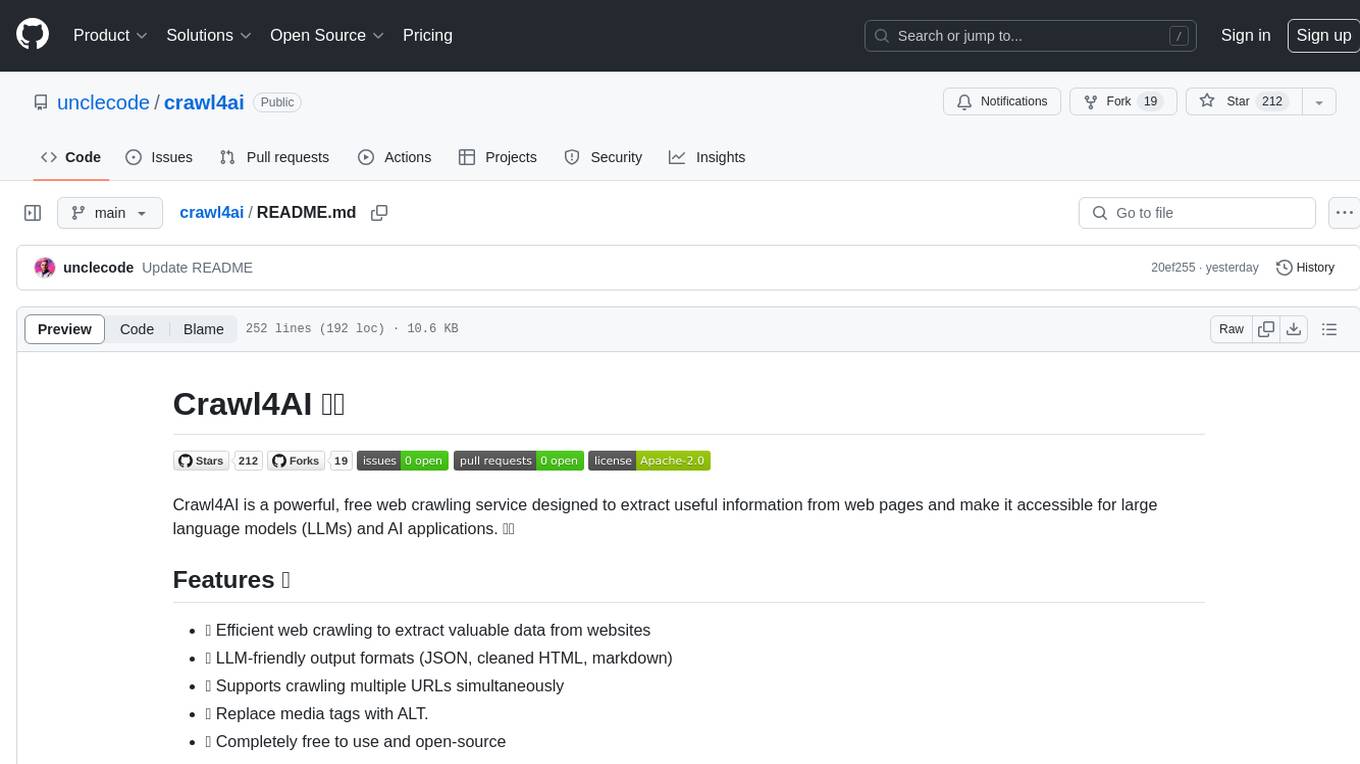
crawl4ai
Crawl4AI is a powerful and free web crawling service that extracts valuable data from websites and provides LLM-friendly output formats. It supports crawling multiple URLs simultaneously, replaces media tags with ALT, and is completely free to use and open-source. Users can integrate Crawl4AI into Python projects as a library or run it as a standalone local server. The tool allows users to crawl and extract data from specified URLs using different providers and models, with options to include raw HTML content, force fresh crawls, and extract meaningful text blocks. Configuration settings can be adjusted in the `crawler/config.py` file to customize providers, API keys, chunk processing, and word thresholds. Contributions to Crawl4AI are welcome from the open-source community to enhance its value for AI enthusiasts and developers.
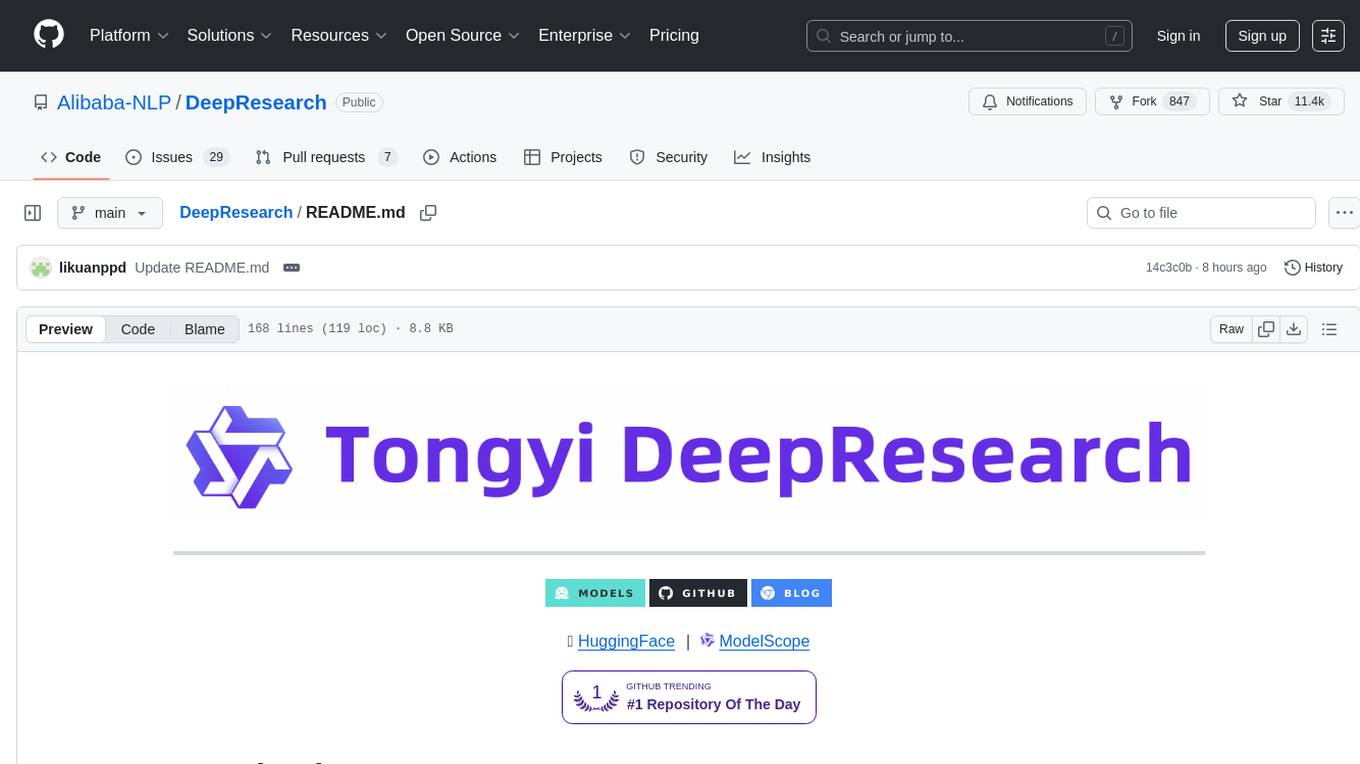
DeepResearch
Tongyi DeepResearch is an agentic large language model with 30.5 billion total parameters, designed for long-horizon, deep information-seeking tasks. It demonstrates state-of-the-art performance across various search benchmarks. The model features a fully automated synthetic data generation pipeline, large-scale continual pre-training on agentic data, end-to-end reinforcement learning, and compatibility with two inference paradigms. Users can download the model directly from HuggingFace or ModelScope. The repository also provides benchmark evaluation scripts and information on the Deep Research Agent Family.
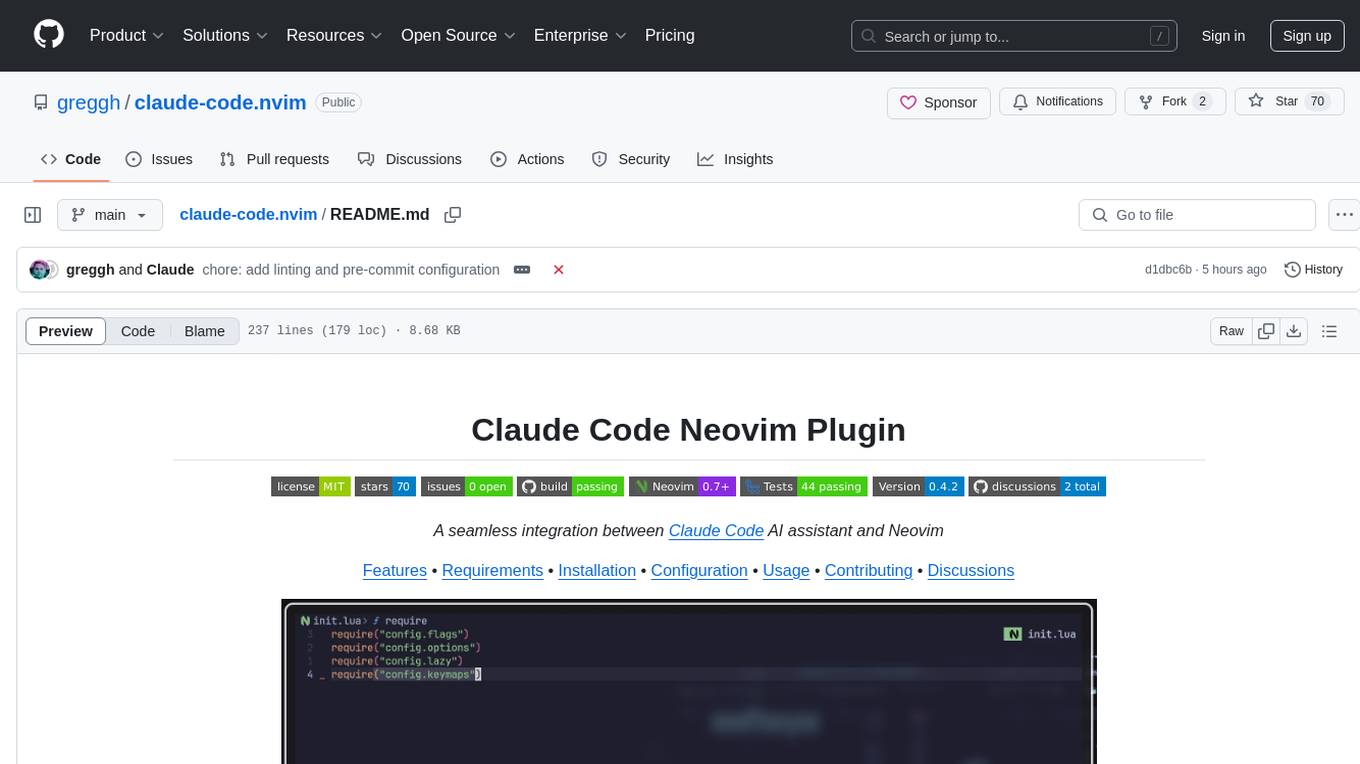
claude-code.nvim
Claude Code Neovim Plugin is a seamless integration between Claude Code AI assistant and Neovim. It allows users to toggle Claude Code in a terminal window with a single key press, automatically detect and reload files modified by Claude Code, provide real-time buffer updates when files are changed externally, offer customizable window position and size, integrate with which-key, use git project root as working directory, maintain a modular code structure, provide type annotations with LuaCATS for better IDE support, offer configuration validation, and include a testing framework for reliability. The plugin creates a terminal buffer running the Claude Code CLI, sets up autocommands to detect file changes on disk, automatically reloads files modified by Claude Code, provides keymaps and commands for toggling the terminal, and detects git repositories to set the working directory to the git root.
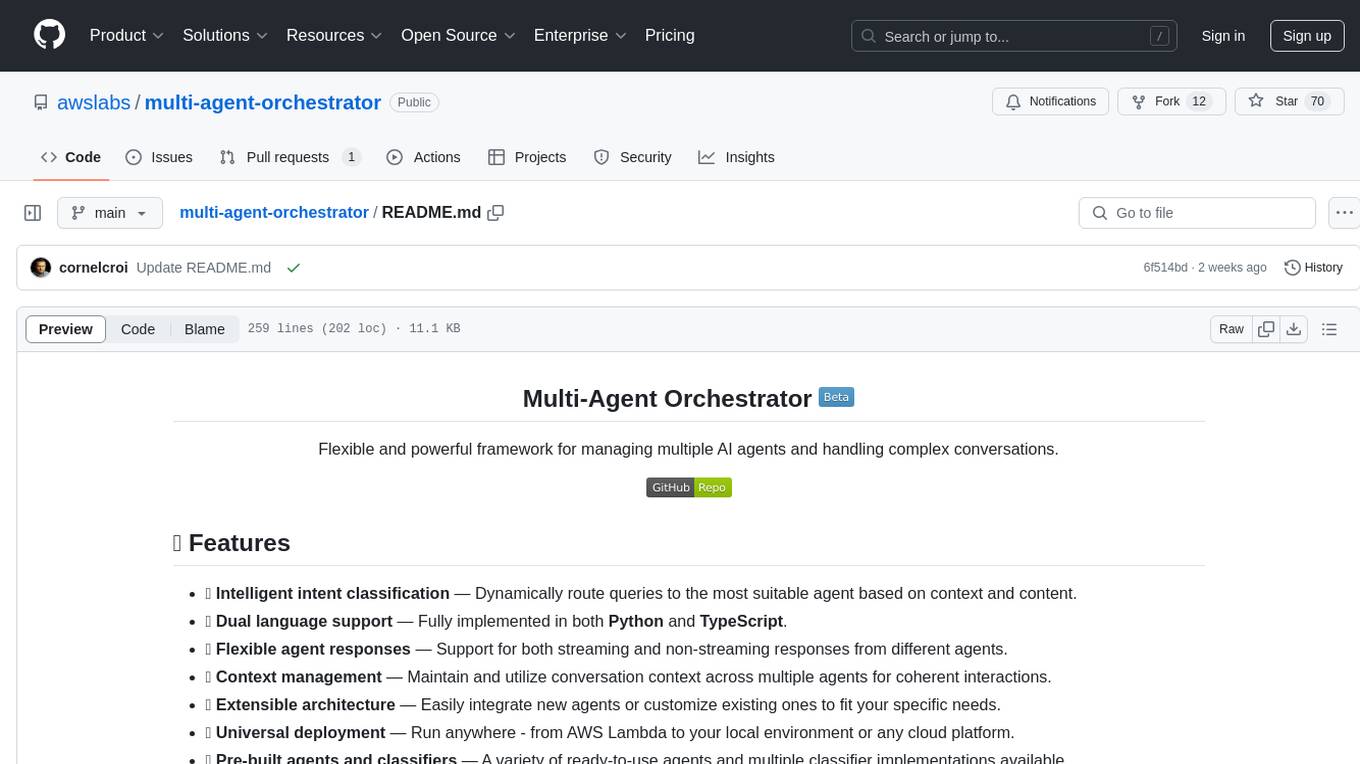
multi-agent-orchestrator
Multi-Agent Orchestrator is a flexible and powerful framework for managing multiple AI agents and handling complex conversations. It intelligently routes queries to the most suitable agent based on context and content, supports dual language implementation in Python and TypeScript, offers flexible agent responses, context management across agents, extensible architecture for customization, universal deployment options, and pre-built agents and classifiers. It is suitable for various applications, from simple chatbots to sophisticated AI systems, accommodating diverse requirements and scaling efficiently.
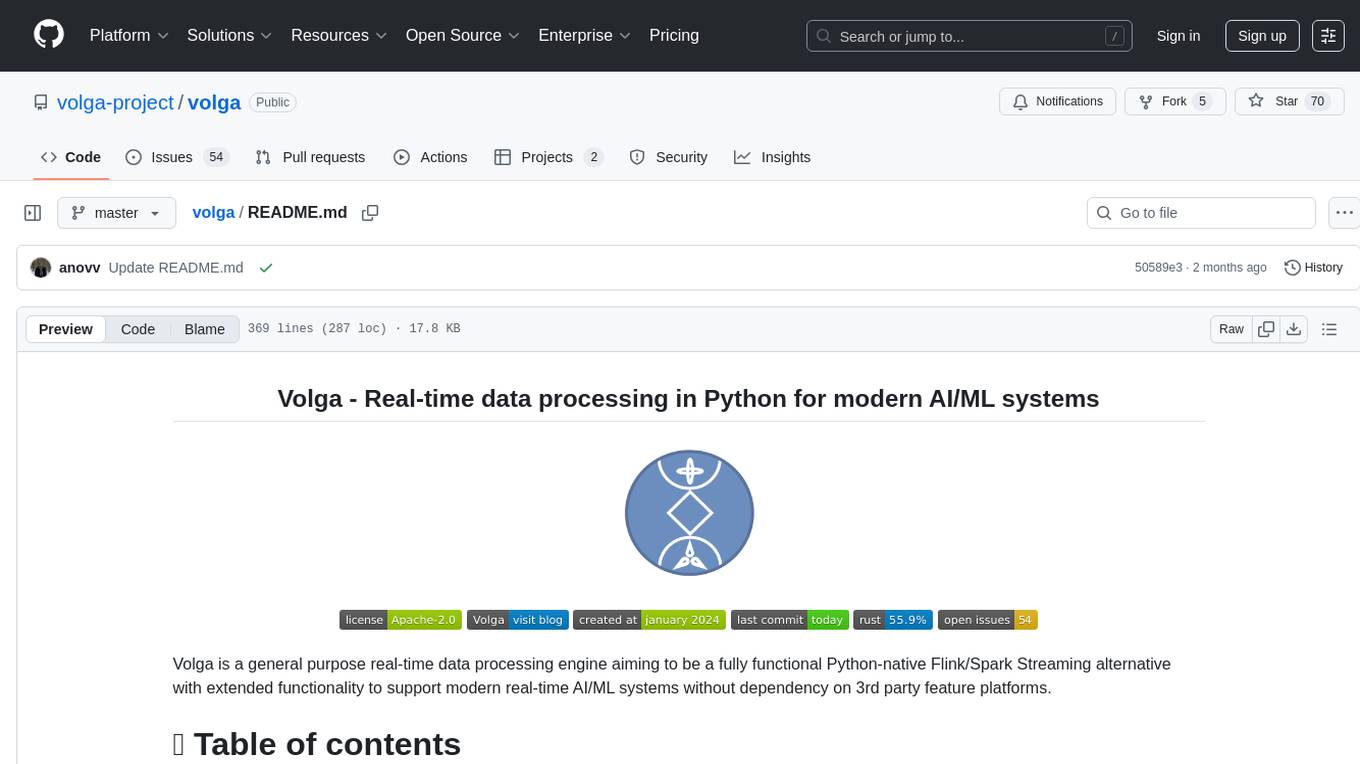
volga
Volga is a general purpose real-time data processing engine in Python for modern AI/ML systems. It aims to be a Python-native alternative to Flink/Spark Streaming with extended functionality for real-time AI/ML workloads. It provides a hybrid push+pull architecture, Entity API for defining data entities and feature pipelines, DataStream API for general data processing, and customizable data connectors. Volga can run on a laptop or a distributed cluster, making it suitable for building custom real-time AI/ML feature platforms or general data pipelines without relying on third-party platforms.
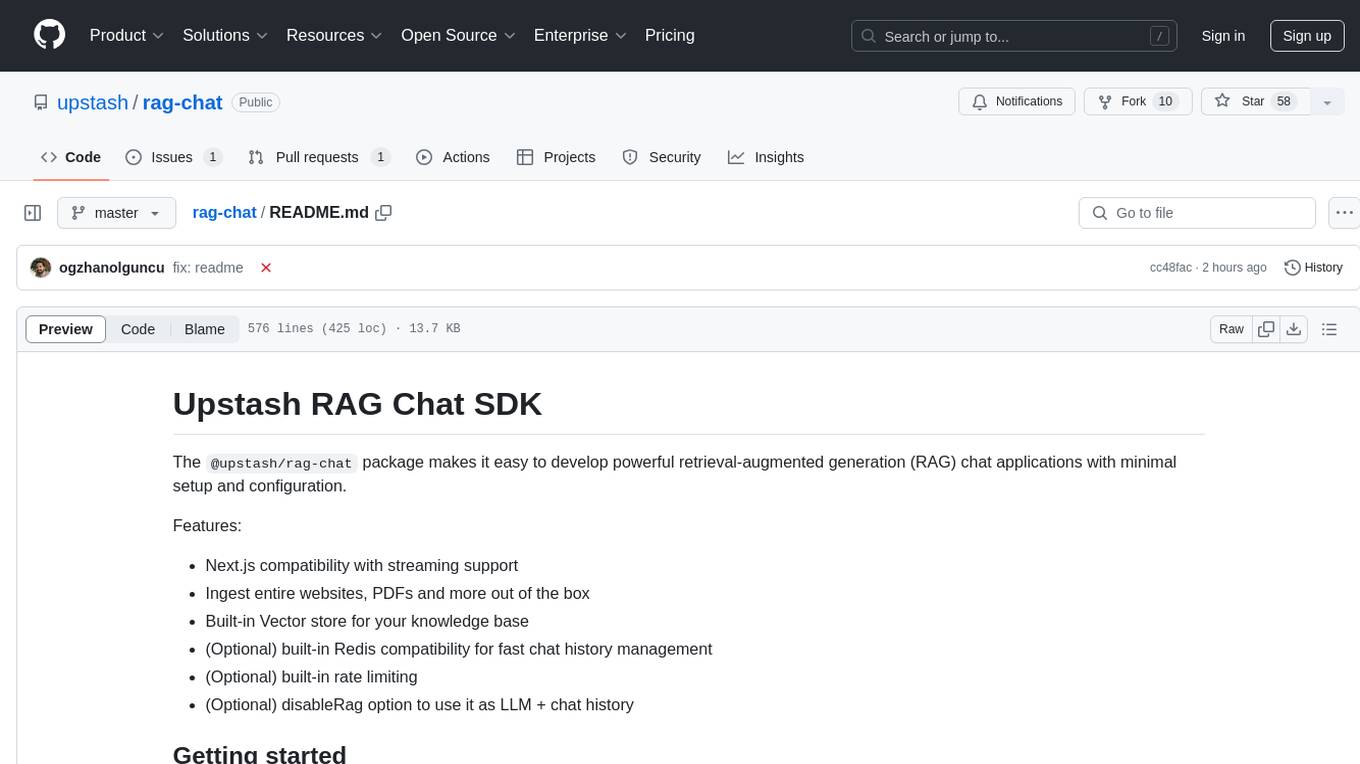
rag-chat
The `@upstash/rag-chat` package simplifies the development of retrieval-augmented generation (RAG) chat applications by providing Next.js compatibility with streaming support, built-in vector store, optional Redis compatibility for fast chat history management, rate limiting, and disableRag option. Users can easily set up the environment variables and initialize RAGChat to interact with AI models, manage knowledge base, chat history, and enable debugging features. Advanced configuration options allow customization of RAGChat instance with built-in rate limiting, observability via Helicone, and integration with Next.js route handlers and Vercel AI SDK. The package supports OpenAI models, Upstash-hosted models, and custom providers like TogetherAi and Replicate.
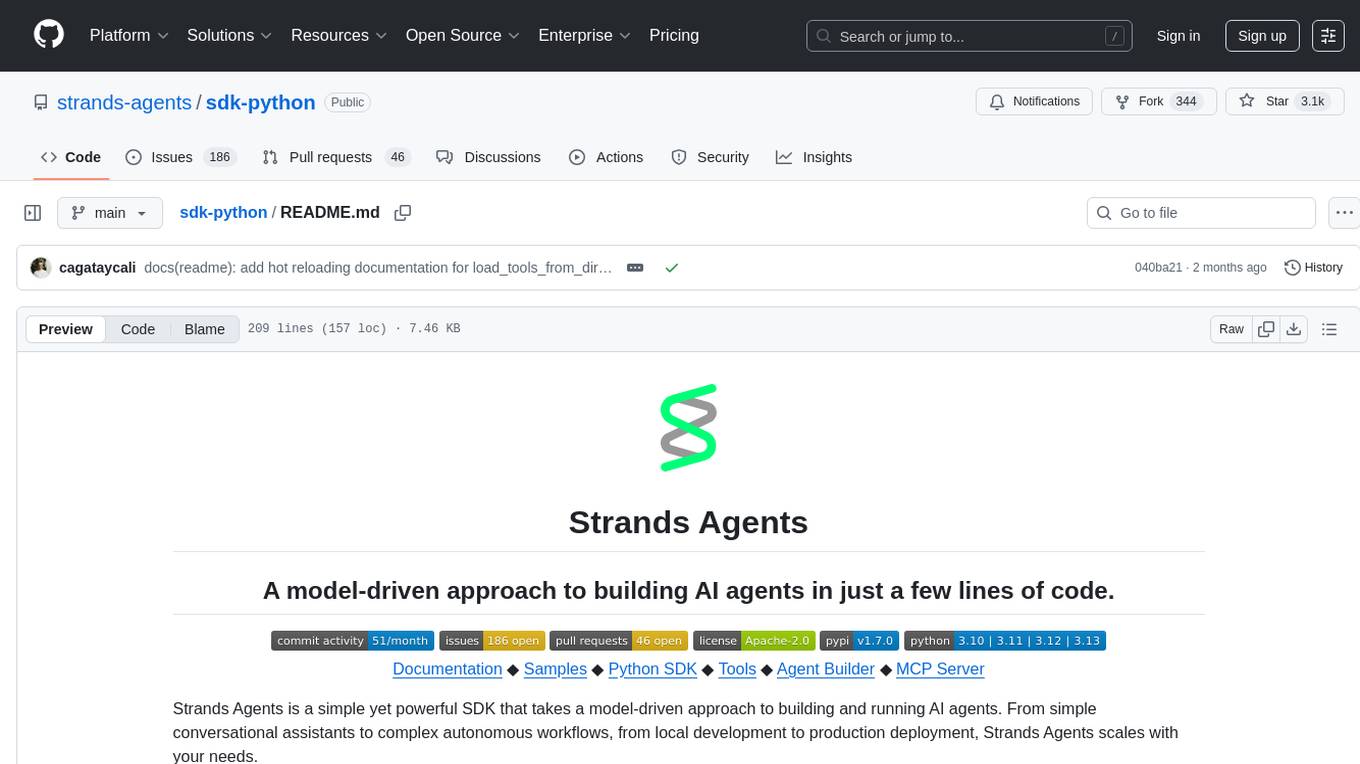
sdk-python
Strands Agents is a lightweight and flexible SDK that takes a model-driven approach to building and running AI agents. It supports various model providers, offers advanced capabilities like multi-agent systems and streaming support, and comes with built-in MCP server support. Users can easily create tools using Python decorators, integrate MCP servers seamlessly, and leverage multiple model providers for different AI tasks. The SDK is designed to scale from simple conversational assistants to complex autonomous workflows, making it suitable for a wide range of AI development needs.
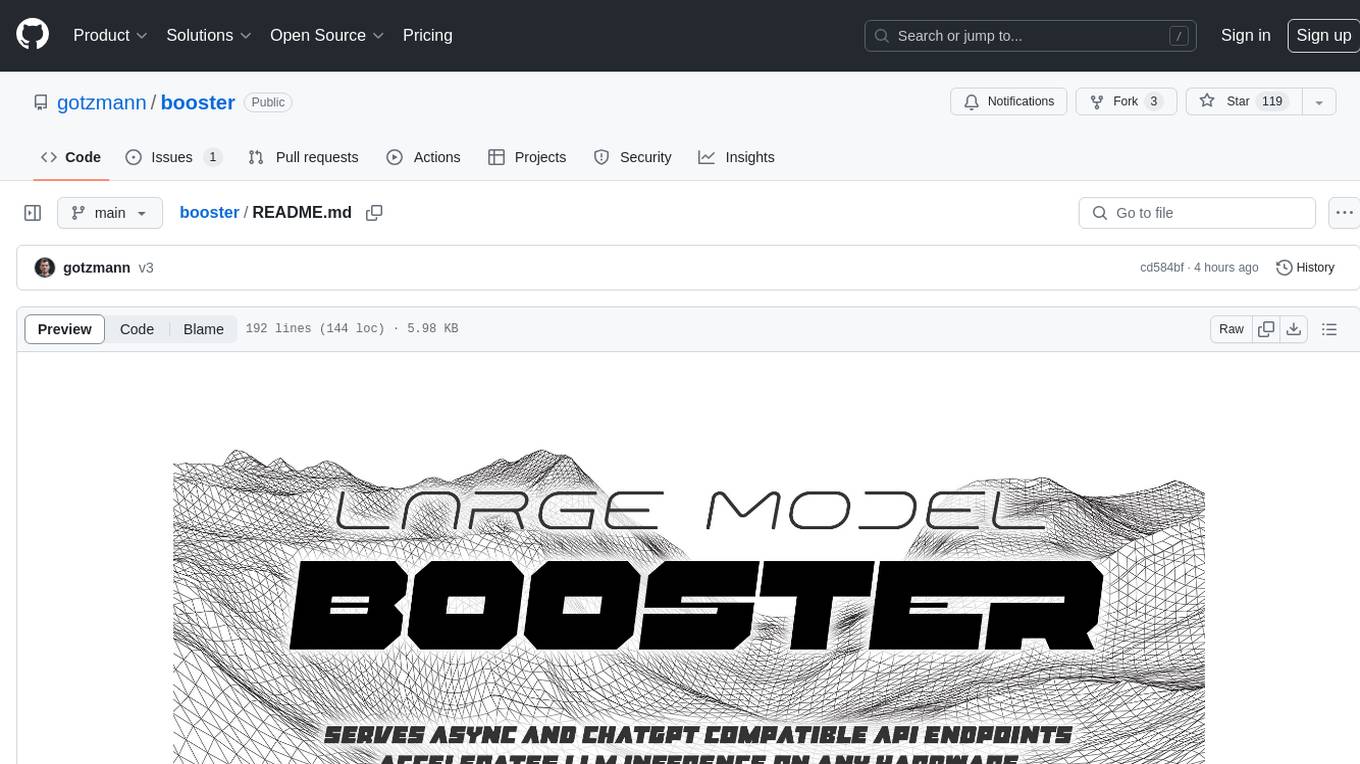
booster
Booster is a powerful inference accelerator designed for scaling large language models within production environments or for experimental purposes. It is built with performance and scaling in mind, supporting various CPUs and GPUs, including Nvidia CUDA, Apple Metal, and OpenCL cards. The tool can split large models across multiple GPUs, offering fast inference on machines with beefy GPUs. It supports both regular FP16/FP32 models and quantised versions, along with popular LLM architectures. Additionally, Booster features proprietary Janus Sampling for code generation and non-English languages.
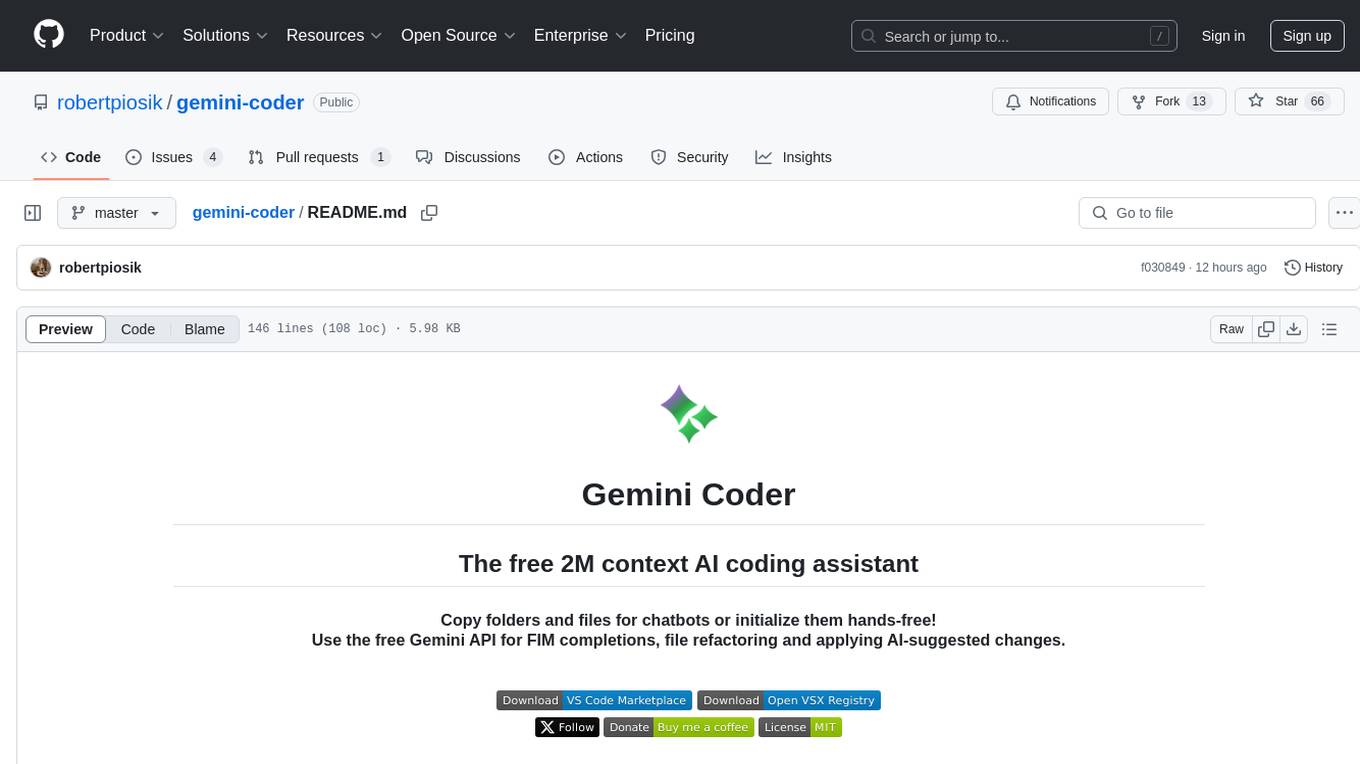
gemini-coder
Gemini Coder is a free 2M context AI coding assistant that allows users to conveniently copy folders and files for chatbots. It provides FIM completions, file refactoring, and AI-suggested changes. The extension is versatile, private, and lightweight, offering unmatched accuracy, speed, and cost in AI assistance. Users have full control over the context and coding conventions included, ensuring high performance and signal to noise ratio. Gemini Coder supports various chatbots and provides quick start guides for chat and FIM completions. It also offers commands for FIM completions, refactoring, applying changes, chat, and context copying. Users can set up custom model providers for API features and contribute to the project through pull requests or discussions. The tool is licensed under the MIT License.
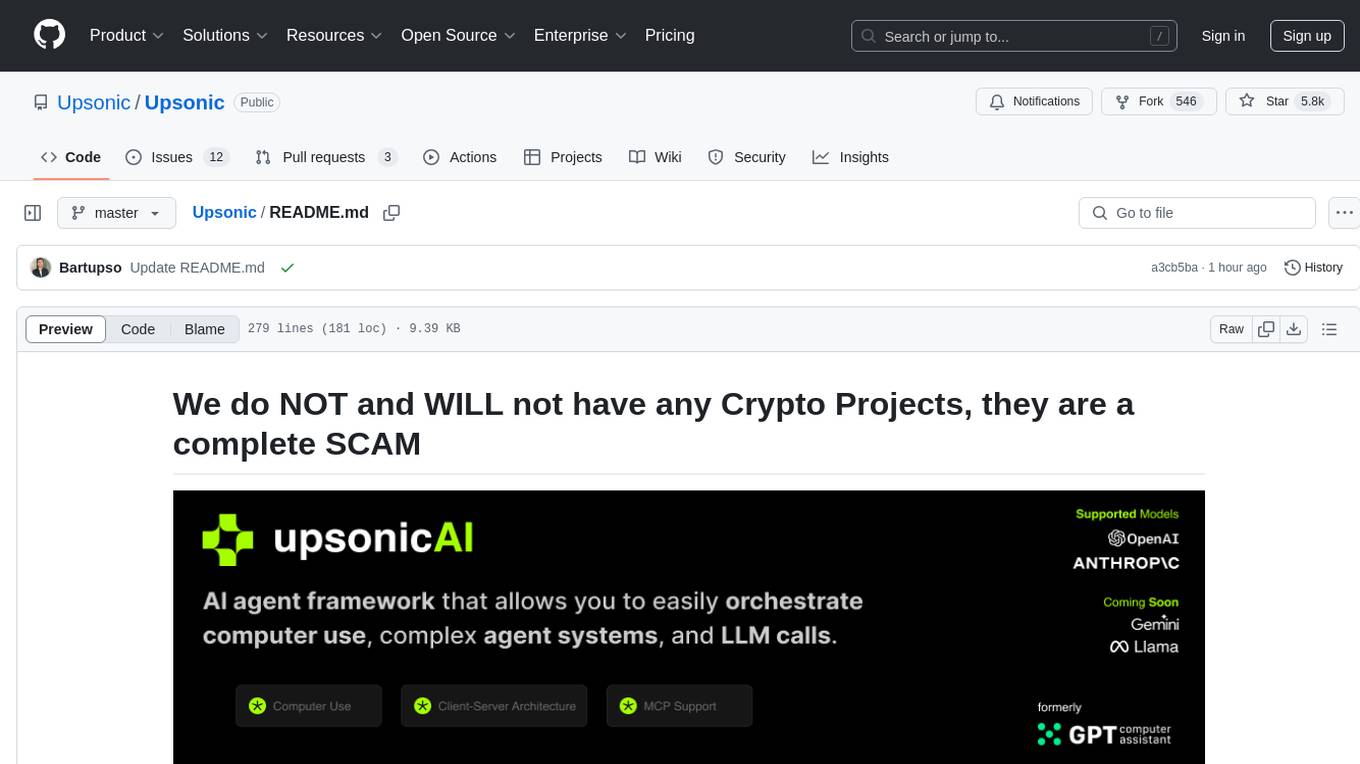
gpt-computer-assistant
GPT Computer Assistant (GCA) is an open-source framework designed to build vertical AI agents that can automate tasks on Windows, macOS, and Ubuntu systems. It leverages the Model Context Protocol (MCP) and its own modules to mimic human-like actions and achieve advanced capabilities. With GCA, users can empower themselves to accomplish more in less time by automating tasks like updating dependencies, analyzing databases, and configuring cloud security settings.
For similar tasks

clearml-serving
ClearML Serving is a command line utility for model deployment and orchestration, enabling model deployment including serving and preprocessing code to a Kubernetes cluster or custom container based solution. It supports machine learning models like Scikit Learn, XGBoost, LightGBM, and deep learning models like TensorFlow, PyTorch, ONNX. It provides a customizable RestAPI for serving, online model deployment, scalable solutions, multi-model per container, automatic deployment, canary A/B deployment, model monitoring, usage metric reporting, metric dashboard, and model performance metrics. ClearML Serving is modular, scalable, flexible, customizable, and open source.
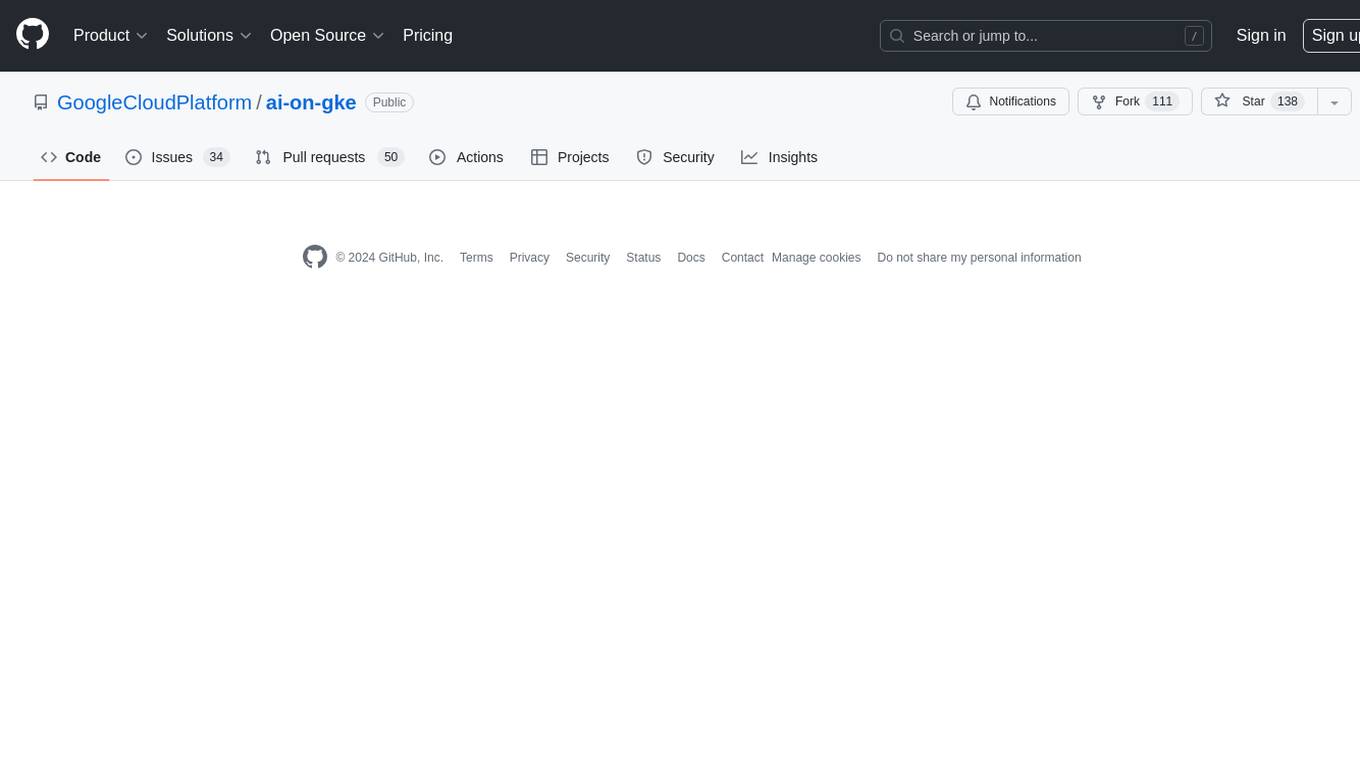
ai-on-gke
This repository contains assets related to AI/ML workloads on Google Kubernetes Engine (GKE). Run optimized AI/ML workloads with Google Kubernetes Engine (GKE) platform orchestration capabilities. A robust AI/ML platform considers the following layers: Infrastructure orchestration that support GPUs and TPUs for training and serving workloads at scale Flexible integration with distributed computing and data processing frameworks Support for multiple teams on the same infrastructure to maximize utilization of resources
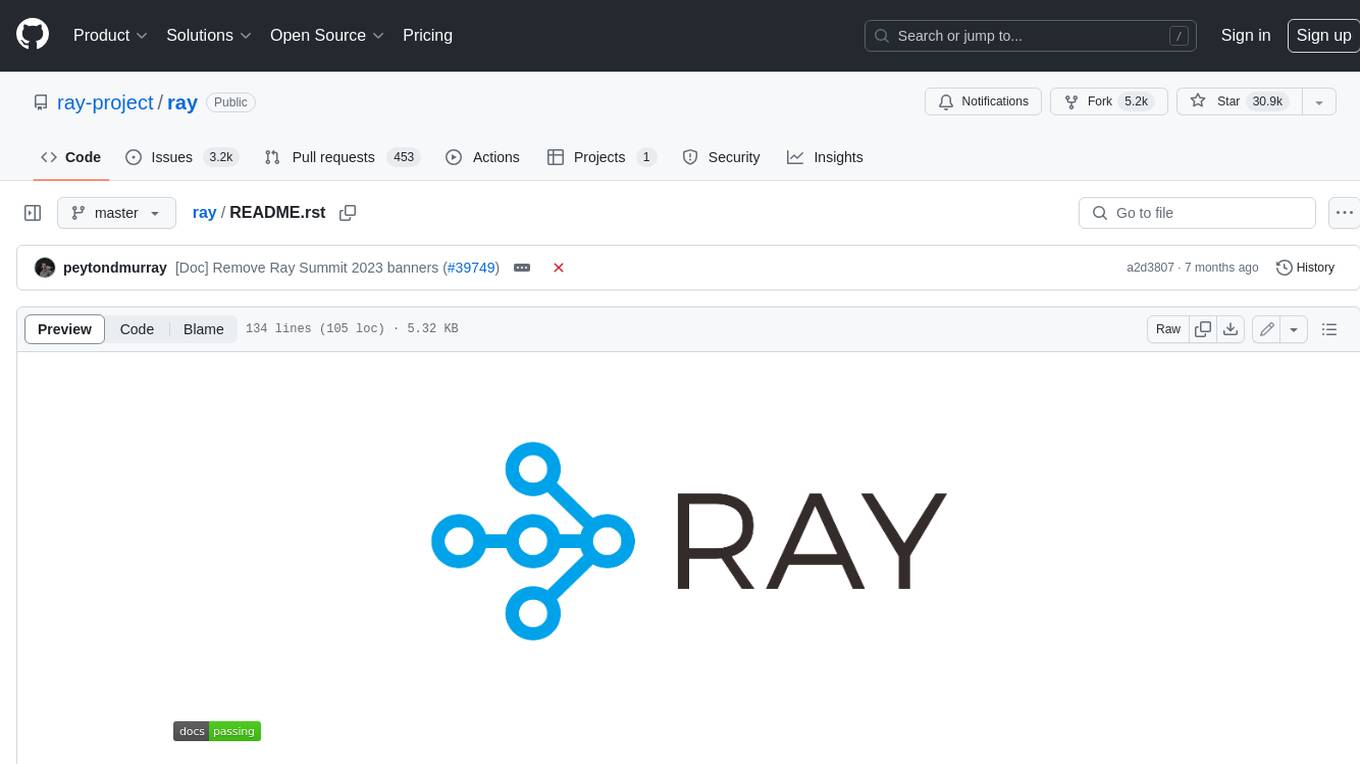
ray
Ray is a unified framework for scaling AI and Python applications. It consists of a core distributed runtime and a set of AI libraries for simplifying ML compute, including Data, Train, Tune, RLlib, and Serve. Ray runs on any machine, cluster, cloud provider, and Kubernetes, and features a growing ecosystem of community integrations. With Ray, you can seamlessly scale the same code from a laptop to a cluster, making it easy to meet the compute-intensive demands of modern ML workloads.
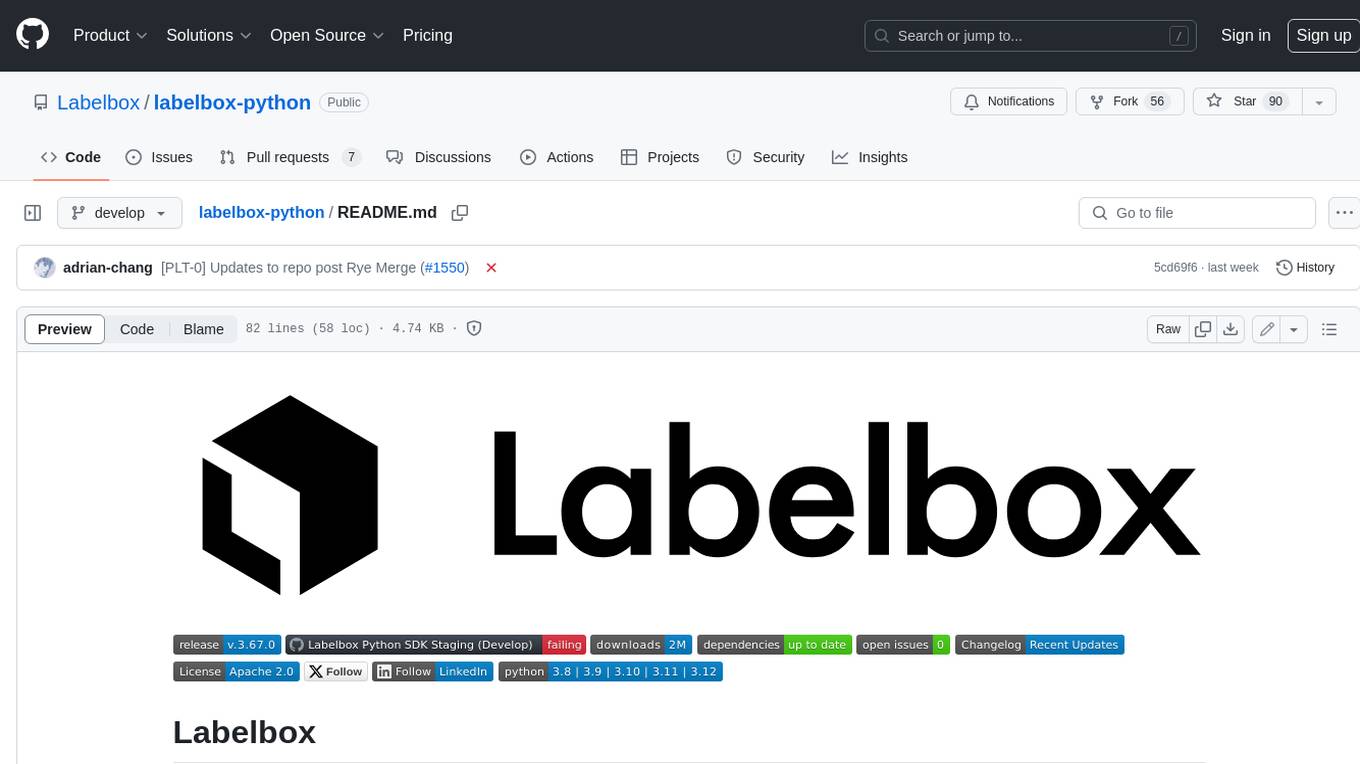
labelbox-python
Labelbox is a data-centric AI platform for enterprises to develop, optimize, and use AI to solve problems and power new products and services. Enterprises use Labelbox to curate data, generate high-quality human feedback data for computer vision and LLMs, evaluate model performance, and automate tasks by combining AI and human-centric workflows. The academic & research community uses Labelbox for cutting-edge AI research.
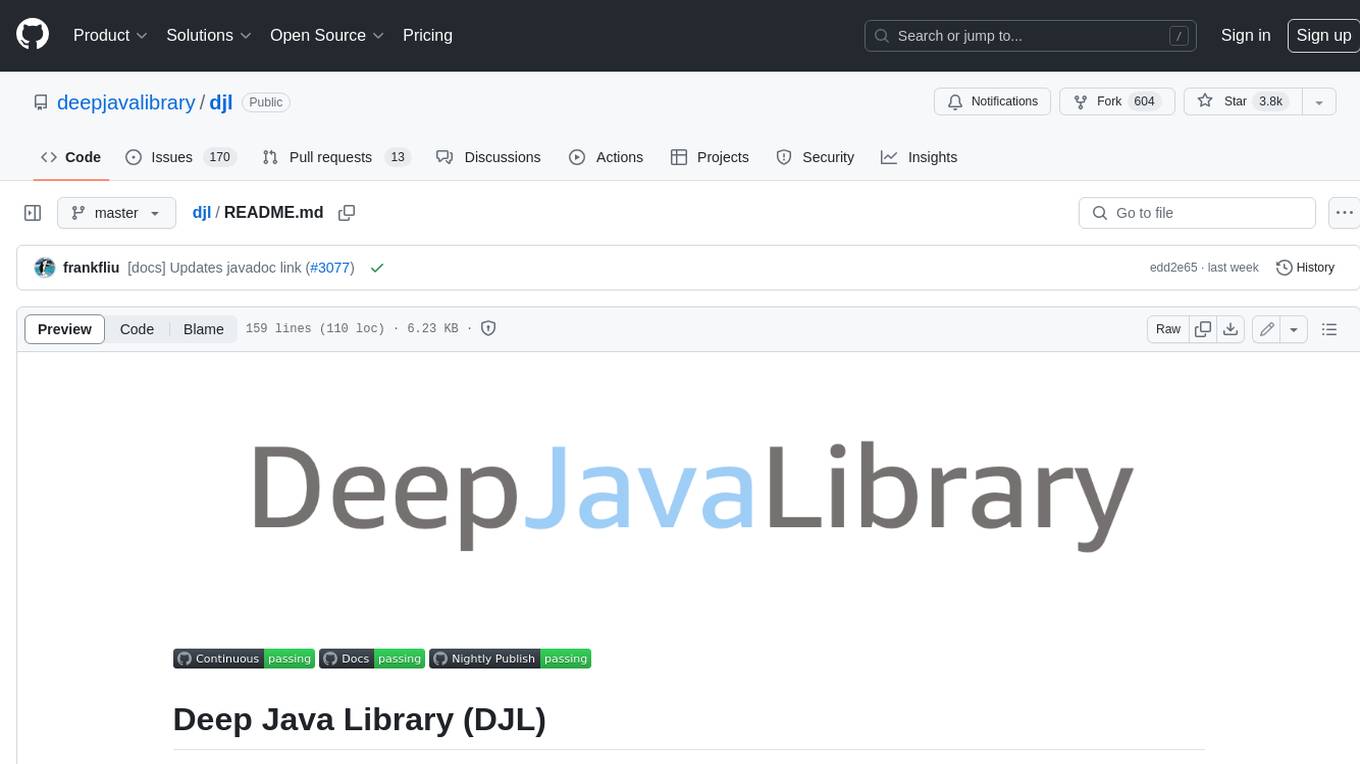
djl
Deep Java Library (DJL) is an open-source, high-level, engine-agnostic Java framework for deep learning. It is designed to be easy to get started with and simple to use for Java developers. DJL provides a native Java development experience and allows users to integrate machine learning and deep learning models with their Java applications. The framework is deep learning engine agnostic, enabling users to switch engines at any point for optimal performance. DJL's ergonomic API interface guides users with best practices to accomplish deep learning tasks, such as running inference and training neural networks.

mlflow
MLflow is a platform to streamline machine learning development, including tracking experiments, packaging code into reproducible runs, and sharing and deploying models. MLflow offers a set of lightweight APIs that can be used with any existing machine learning application or library (TensorFlow, PyTorch, XGBoost, etc), wherever you currently run ML code (e.g. in notebooks, standalone applications or the cloud). MLflow's current components are:
* `MLflow Tracking

tt-metal
TT-NN is a python & C++ Neural Network OP library. It provides a low-level programming model, TT-Metalium, enabling kernel development for Tenstorrent hardware.

burn
Burn is a new comprehensive dynamic Deep Learning Framework built using Rust with extreme flexibility, compute efficiency and portability as its primary goals.
For similar jobs

sweep
Sweep is an AI junior developer that turns bugs and feature requests into code changes. It automatically handles developer experience improvements like adding type hints and improving test coverage.

teams-ai
The Teams AI Library is a software development kit (SDK) that helps developers create bots that can interact with Teams and Microsoft 365 applications. It is built on top of the Bot Framework SDK and simplifies the process of developing bots that interact with Teams' artificial intelligence capabilities. The SDK is available for JavaScript/TypeScript, .NET, and Python.

ai-guide
This guide is dedicated to Large Language Models (LLMs) that you can run on your home computer. It assumes your PC is a lower-end, non-gaming setup.

classifai
Supercharge WordPress Content Workflows and Engagement with Artificial Intelligence. Tap into leading cloud-based services like OpenAI, Microsoft Azure AI, Google Gemini and IBM Watson to augment your WordPress-powered websites. Publish content faster while improving SEO performance and increasing audience engagement. ClassifAI integrates Artificial Intelligence and Machine Learning technologies to lighten your workload and eliminate tedious tasks, giving you more time to create original content that matters.

chatbot-ui
Chatbot UI is an open-source AI chat app that allows users to create and deploy their own AI chatbots. It is easy to use and can be customized to fit any need. Chatbot UI is perfect for businesses, developers, and anyone who wants to create a chatbot.

BricksLLM
BricksLLM is a cloud native AI gateway written in Go. Currently, it provides native support for OpenAI, Anthropic, Azure OpenAI and vLLM. BricksLLM aims to provide enterprise level infrastructure that can power any LLM production use cases. Here are some use cases for BricksLLM: * Set LLM usage limits for users on different pricing tiers * Track LLM usage on a per user and per organization basis * Block or redact requests containing PIIs * Improve LLM reliability with failovers, retries and caching * Distribute API keys with rate limits and cost limits for internal development/production use cases * Distribute API keys with rate limits and cost limits for students

uAgents
uAgents is a Python library developed by Fetch.ai that allows for the creation of autonomous AI agents. These agents can perform various tasks on a schedule or take action on various events. uAgents are easy to create and manage, and they are connected to a fast-growing network of other uAgents. They are also secure, with cryptographically secured messages and wallets.

griptape
Griptape is a modular Python framework for building AI-powered applications that securely connect to your enterprise data and APIs. It offers developers the ability to maintain control and flexibility at every step. Griptape's core components include Structures (Agents, Pipelines, and Workflows), Tasks, Tools, Memory (Conversation Memory, Task Memory, and Meta Memory), Drivers (Prompt and Embedding Drivers, Vector Store Drivers, Image Generation Drivers, Image Query Drivers, SQL Drivers, Web Scraper Drivers, and Conversation Memory Drivers), Engines (Query Engines, Extraction Engines, Summary Engines, Image Generation Engines, and Image Query Engines), and additional components (Rulesets, Loaders, Artifacts, Chunkers, and Tokenizers). Griptape enables developers to create AI-powered applications with ease and efficiency.






